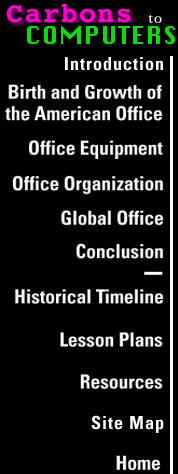
Office Organization
Most observers agree that offices are not egalitarian. Someone is at the top, someone else is on the bottom. Various utopian experiments and communal organizations do exist on the periphery of American business, and some are successful. But the overwhelming majority of corporate structures in this country are built hierarchically, with top management, middle management, and support staff.

Some businesses are organized somewhat differently. Professional partnerships like law firms and medical practices, for example, have no investors; the partners share equal power, equal decision-making authority, and equal access to the profits. A small professional office of this type may have no middle management, just the partners and their support staff.
Larger organizations usually have one person at the top, the president or chief executive officer, who reports directly to the board of directors (the investors or persons who represent the investors). These top managers usually depend on middle managers for two main reasons. The business is too large for one person or group to manage directly, and a large business is so complex as to require people with specialized skills or areas of expertise to run various departments.
A company that manufactures a product, for example, would require a chief financial officer to control payroll, ordering and paying for parts, sending bills and recording payments, and maintaining records for auditing and tax purposes. The company would also require a chief engineer--a technical expert in the company's line of business. The business would require shipping and receiving departments and people to head them. Someone would have to supervise all of the factory workers, train them, give them work assignments, monitor their comings and goings, and check the quality of their work. As the company grew in size, this would be too big a job for one person: another engineer could be responsible only for quality control. Breaking down work into smaller jobs is called specialization-which is characteristic of work and business in industrial and postindustrial societies.